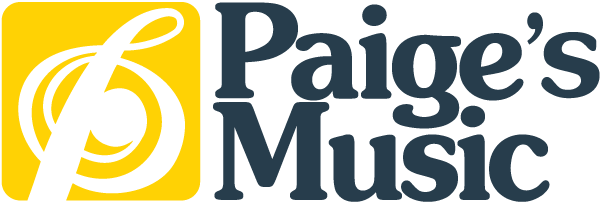What Are The Advantages of an Advanced Trombone? – FAQs

Yamaha YSL-882O
Currently, Paige’s Music offers a variety of professional-level trombones, including models from Bach, Conn, and Yamaha. All of these horns feature thicker brass, a large bore, and professional level-craftsmanship. These trombones also feature an F-Attachment.
F-Attachment
The F Attachment allows for greater flexibility in how to approach the lower ranges of the trombone. While a standard tenor trombone can only go to E under the staff and the lower pedal tone series, F attachment provides a bridge to the pedal range.
In addition to providing this extended range, the F-Attachment also allows the performer greater flexibility in approaching technical passages in when moving the slide long distances is not always practical.
F-attachments come configured in two different ways: a closed wrap and an open wrap. This concerns the physical shape of the tubing. A closed wrap coils around itself while an open wrap features long, straight tubing shaped like the slide.
One of the main differences between a closed wrap and an open wrap is clarity. As the name suggests, an open wrap tends to be clearer and more resonant than a closed wrap. A closed wrap doesn’t offer quite the same clarity as an open wrap, but it takes up less space and generally offers more resistance than the open wrap.
An F-Attachment does require the performer to tune each note with more care and make bigger adjustments with the slide. Generally, the F-Attachment can cause low notes to be on the sharp side, so the slide must be further beyond the “normal” position. For example, using the trigger and a “normal” 4th position would cause the D below the staff to be very sharp, this can be fixed by simply putting the slide close to the 5th position. When going out to the low B natural, you run out of slide and are forced to make an adjustment by opening the embouchure and forcing the pitch down.
Larger Bore
Another advantage of more advanced trombones is the larger bore. A larger bore generally allows for more air to pass through the instrument providing a warmer, darker sound often desired in orchestral, symphonic, and wind ensemble repertoire. The larger bore also allows the lower range of the instrument to be fuller.
In moving from a small bore to a larger bore instrument, there is a learning curve as the instrument will feel different. Practice will allow you to grow into these changes.
Craftsmanship
One of the major factors in what makes an advanced or professional trombone standout from a student model is the level of craftsmanship. High-quality trombones feature a hybrid of production methods utilizing the best technology for precision engineering and the artistry of great craftsmanship to make for the best possible experience in both sound and quality. One example of this craftsmanship is the manufacturing of the bell. Many high-quality trombones feature a hand-hammered bell while most slides are aligned using computers to make sure the inner and outer slides fit perfectly, providing the best possible slide action.
Final Thoughts
When it comes to choosing the right trombone, the best advice Paige’s Music can give is to try out trombones. Spend quality time with each instrument and figure out what you like and what you don’t like! Ask questions like:
“What kind of tone do I want?”
“Do I prefer less resistance or more resistance?”
“Does this trombone provide the slide I need for technical passages?”
“Does this trombone provide extra security in higher range?”
“Do I want a closed wrap or open wrap F-attachment?”
Quality time spent playing each instrument will help you discern what you like and what you don’t like and is the most important factor in choosing the right instrument for you!
